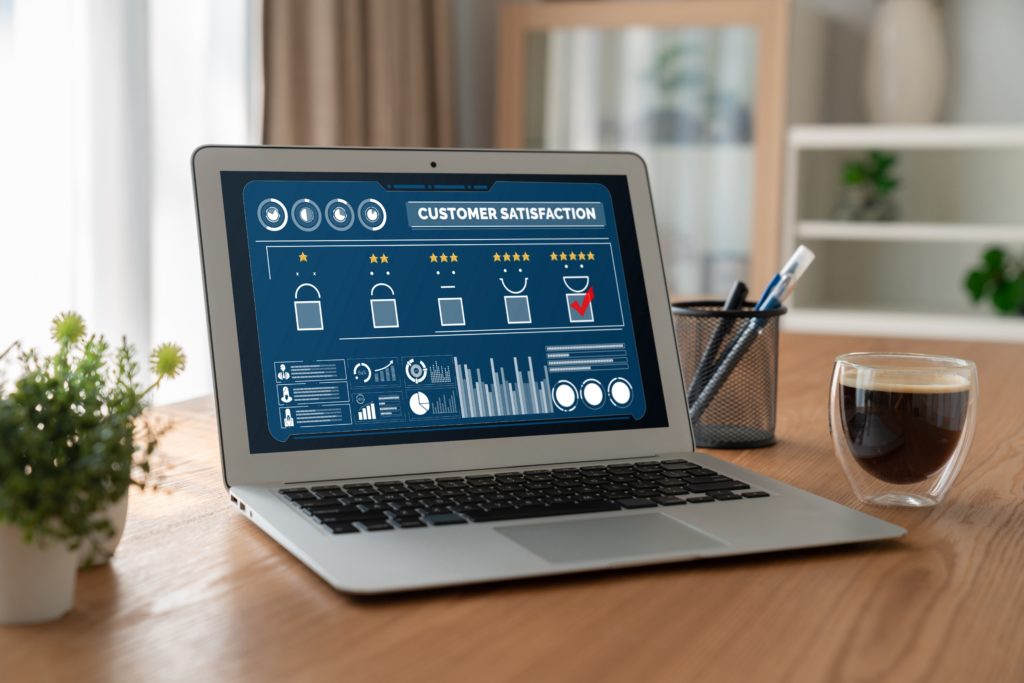
Navigating Customer Data Unification Through a Merger as a Revenue Leader
Combining revenue streams can feel more like minimizing the collision between distinct revenue operations during a merger or acquisition. While it’s inevitable to expect more work aligning corporate acquisitions with your company’s aim, your focus should be on leveraging your newfound market reach — not micromanaging operational details. As we’ll explore, full customer data unification is the key to keeping your eyes on the forest, not the trees.
Customer Data Unification Through a CRO’s Eyes
In early 2022, Gartner reported that a mere 14% of organizations have a complete, 360-degree view of their customer profile. While discouraging to some, this is fantastic news for that minority who are far better equipped than the competition in the customer-brand arena. Discovering what that entails becomes a natural focus after a merger when taking hold of a new market share means gaining customer relationships.
It’s essential, though, to take a moment to take stock when you want to charge ahead. Gartner’s report also highlighted one potential challenge for the remaining 86%: lacking a 360-degree view means risking investing in the wrong tools and strategies.
Acquiring an organization is a package deal. You gain the company, employees, and existing tools in one fell swoop. You need to take a moment to take inventory and assess to avoid missing out on the benefits of existing processes (or improving on them where possible). In many cases, that spells lost customers and revenue.
Merging Multiple Sources of Customer Data
In the end, fully unified customer data should be your primary tool. This is where the customers declare their intentions louder than any data collection contained in proprietary apps, platforms, or web services. Just as modern customers assess companies by their overall cohesion, businesses should evaluate their tech stack’s value according to how well-integrated it is.
If another tool is the answer, then it’s fair to expect that it will be distinct from the types of platforms, services, and apps most businesses have already become familiar with. However, this data-management panacea must be transparent and is most helpful in removing obstacles between your staff and the raw, contextualized data they need.
Related: When Is the Right Time to Start Thinking About RevOps Data Automation?
Clearing the Way With Faster Application of Data
As the frontline of your revenue, your organization should scrutinize customer-brand interactions as thoroughly as possible, yet a view of past revenue performance shouldn’t detract from future opportunities.
As eCommerce generally drove significant changes in customer-brand relationships, it largely did so through a proliferation of apps and platforms, especially CRM. Now, even entirely local storefronts depend on such tools to manage daily operations. This occurred by scale, as innovation spread from a fast-growing niche to general utility. What companies are facing now is a need to apply that same scale of innovation to the unwieldy siloing effect that has rightly become one of the most popular topics in business circles everywhere.
Parsing customer information to discover new revenue opportunities held clear advantages but has also presented new data-management challenges. As companies attribute provable returns to wide-scale data collection, that data accumulates faster than it can be efficiently compiled and indexed.
Each app and platform has often become an insular realm of data. Switching between apps is not just inconvenient, it also increases the chance of error. Harvard Business Review even published a study showing that toggling between apps can waste up to four hours per employee daily.
If the prime revenue-boosting action of previous decades was data collection, the equivalent motivation today is bridging disparate data environments. Keeping it all together means ensuring your organization can access data in contextually relevant ways, a responsibility that’s fallen squarely on the revenue leader’s shoulders.
A merger puts your company’s ability to integrate data silos to the ultimate test, and it’s the division between apps where data takes those small (but only at first) diversions from your sales pipeline.
Fortunately, major business restructuring allows revenue leaders to restructure their data-management systems. New acquisitions open up new storehouses of valuable customer data. Still, like finding a vast treasure trove, the same benefit becomes its challenge: how and where can you best use your new resources?
Interconnection
Customer data unification is the game changer for those companies struggling to achieve that 360° view of their customers. Data unification enables faster integration of disparate data sets. Your staff must work less on the details and more on what they represent, allowing the companies to improve their staff’s focus on what’s affecting business operations in real-time.
Cohesion between sales, marketing, and support is the bread and butter of RevOps, and respect for this simple formula is essential to ensuring the customers shine brighter than the data. Further technicalities are not the answer. Companies have already mastered increasingly unwieldy tech stacks, leaving them wanting for cohesion.
Achieving this will bring the broader view customarily reserved for the boardroom down to the departmental level.
Interdepartmental Transformation: the New IT
Customer data unification is the glue that will hold all departments together, no matter how many or which apps they’re using. If an app or service isn’t elevating the relational nature of your business, it may be either:
- Not the right tool, or
- The right tool is used incorrectly
Still, with any significant new encounter with data, revenue leaders must select a point to begin. It must be the most strategic data source that will serve as the guide for achieving full-scale data integration as quickly as possible.
It often comes down to the CRM or multiple CRMs because marketing teams are most acutely responsible for knowing an organization’s customers and fomenting the relationships that alone can bring life to the CRO’s vision. Without a unified view of your customers, you’ll inevitably misstep in a relationship-busting way, then needlessly expend resources continually patching up what misapplied resources caused in the first place.
Whether exciting your customer core or patching issues caused by significant data gaps, it’s often surprisingly simple and small details that make all the difference. Yet to a highly technical mind, this translates to a goal of achieving total control of every detail, and they lose sight of the forest.
It’s good job security for the CRO, but it comes with a huge liability to maintain exceptionally high accuracy with the application of data.
The Trees Are the Forest
Revenue leaders alone have the financial incentives and operational pressures that serve as daily reminders of the importance of respecting the unknown. They must guide their teams to continually mine insight from the details already under control to discover which new unknowns they can bring to light. Increasingly, what accomplishes this is the overall cohesion of what’s already been acquired.
When the analysis of new resources becomes more sophisticated, it should also become faster to speed the process so thoroughly that you see where it’s headed at a glance. Each next revenue opportunity will naturally appear when your attention isn’t split between the terrain around you and the horizon ahead.
Related: The Modern Revenue Team: Aligning Marketing Automation & Sales Enablement Systems
Defining the RevOps Journey
Real-time customer data is only possible with real-time integration of all your revenue apps. This requires automated customer data unification and agile use of models based on historical insights into the buyers’ journeys. Without it, your customers are likely to eventually feel unsupported in a deal-breaking way, and it’s more likely to occur by an action that backfires rather than inaction.
This creates pressure to carefully plan every shot, which reflects 1:1 on interdepartmental dynamics. Revenue leaders have simultaneously kept their teams action-oriented while they scan the horizon for any sign of friction. Every customer-brand contact point requires live attention, where your attention must be on what your customers are most likely to do next.
This kind of foresight comes naturally and effortlessly once all past data is merged neatly into present income streams — complete customer data unification. You can’t expend needless resources on managing that past-present dynamic because you’ll only create more data silos. This raises the temptation of expanding your tech stack further when you already have everything you need.
In their role holding the most significant insight into both C-suite and departmental motivations, the revenue leader is in charge of resolving every clogged data funnel that could impact revenue (and that’s all of them). They can’t afford to burden themselves or their team with upheavals to what’s already working in their tech stack.
So what’s this data-unification tool revenue leaders require — that shining gem that’s eluded 86% of mid-market and enterprise companies thus far?
Live, Nearly Native Data Integration With No Code
With the advancement of no-code programming, developer-level control over an entire tech stack is now in the hands of non-developers. Applied to the customer journey, it renders cross-platform integration uncompromisingly simple. Just as data acquisition scaled up at unmanageable levels throughout the 2000s and 2010s, the 2020s are the decade of streamlining data integration at an equivalent scale.
Rather than attempt to dominate your tech stack yet again, what’s needed is to lubricate its many moving parts — not micromanage them. With no-code CRM, marketing automation, and sales platform integration, revenue leaders put the power of total MarTech customization into each employee’s hands… and with astonishing drag-and-drop ease. So, the merger has happened, and you are trying to figure out how to unify 3 CRMs and 2 marketing platforms. Sound familiar? Don’t panic, look for the glue that builds RevOps machines, nearly native data integration tools.
Fully Scaled Customer Data Unification
If your business makes significant organizational adjustments during a merger, your data must also merge in a more cohesive and unified way. Vertify is at the forefront of no-code multi-platform integration that will transform, integrate, and sync your company’s data and entire revenue operations.
Start a live demo today with Vertify for faster data activation and profits, and achieve greater organizational adjustments through fully unified customer data.

Matt Klepac
CEO
Vertify